Historical How-To’s, Special Holiday Edition: The Great Gingerbread Bake-Off
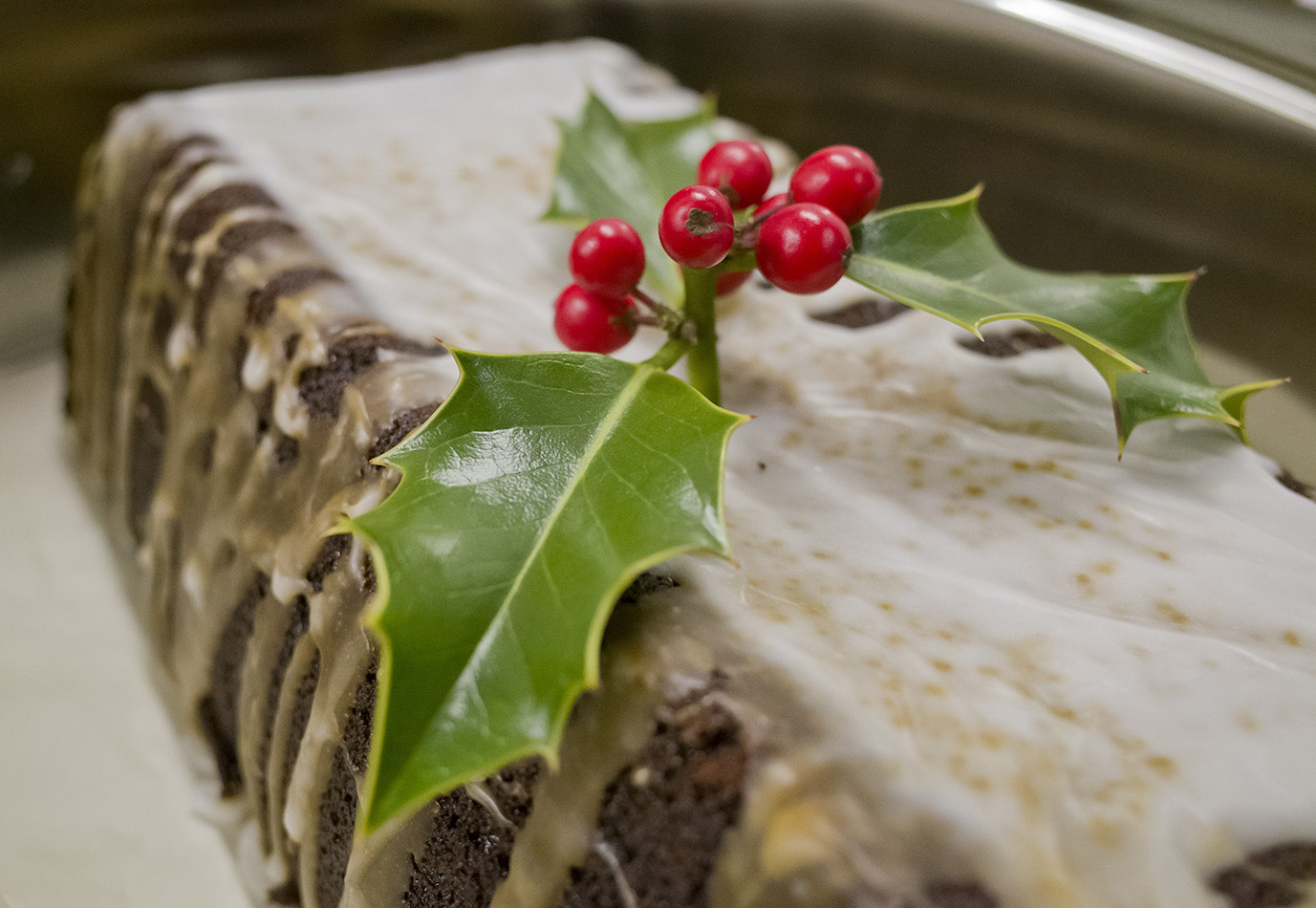
This week, the Historical How-To’s return for a brief encore. Since the Mince Pie Bake-Off last Christmas was such a success, the staff here at Special Collections decided to celebrate the 2014 holidays with another bake-off, this time focusing on historical recipes for gingerbread.
Born of a discussion over coffee about the merits of gingerbread biscuits vs. cake-like loaves, the bake-off drew a total of 13 participants who chose from an assortment of 40 print and manuscript recipes dating from around 1710 to 1845. In the end, we sampled 15 different varieties of gingerbread.
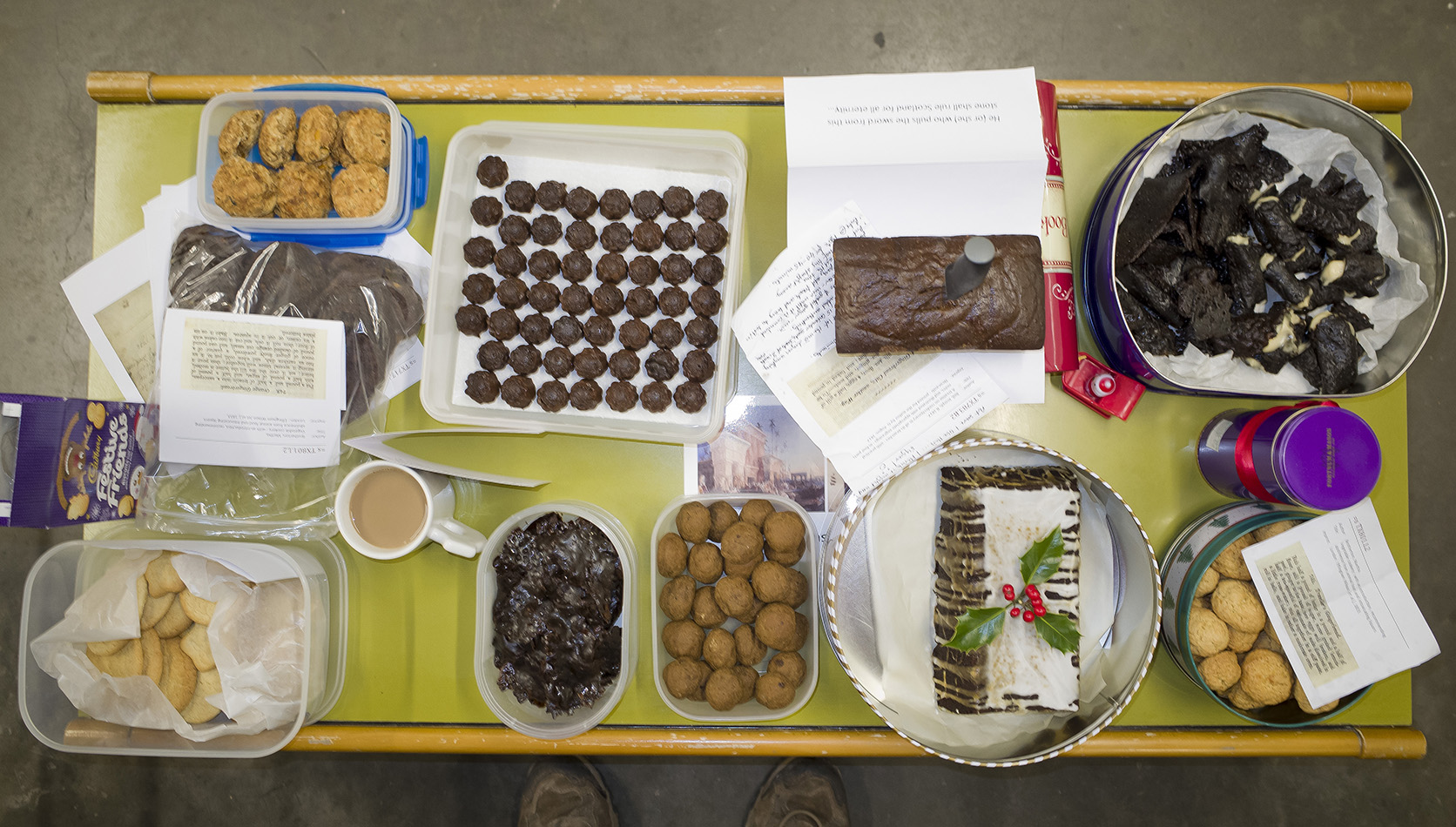
For last year’s mince pie bake-off, although there were subtle differences in taste and texture, all of the different recipes more or less looked and tasted like mince pies. By contrast, our gingerbread came in a staggering variety of colours, textures, shapes, and flavours. The quantity of ginger varied from enough to leave the tongue burning (To Make Gingerbread, from Mrs Edwards recipe book) to no ginger at all (Queen’s Gingerbread). Black treacle featured prominently in many of the recipes (such as Orange Gingerbread), with one or two recipes making use of unexpected ingredients such as rose water (Traveller’s Gingerbread) or even black pepper (Gingerbread from a Scottish Recipe Book, ca. 1710, ms38930). We had loaves (Gingerbread from Mrs Grieg’s recipe book), rolled biscuits (White Gingerbread), round balls (Good Plain Gingerbread), and soft, gooey sheets (Transparent or Snap Gingerbread).
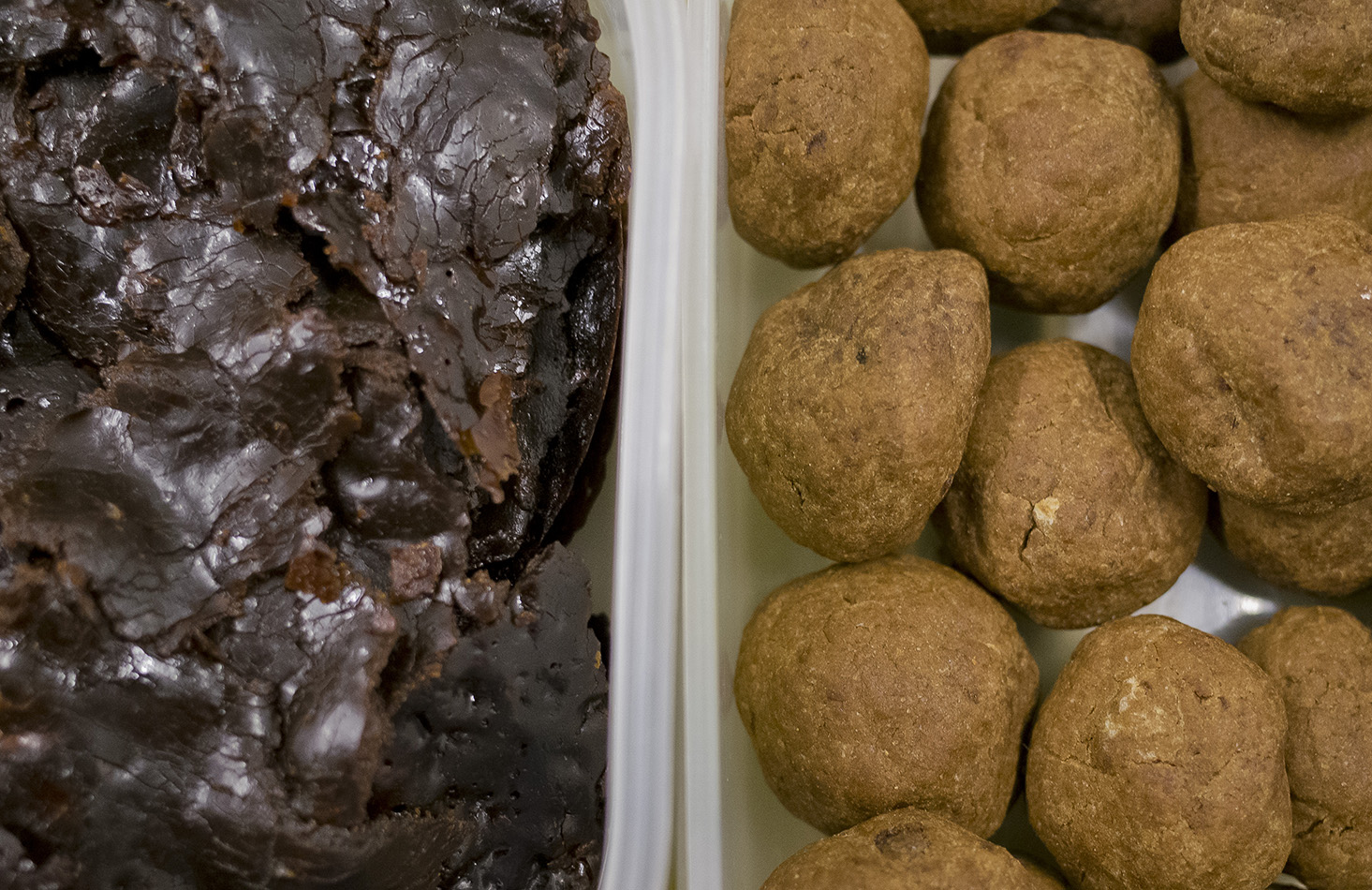
One attribute that many of the gingerbread recipes shared, however, was a complete absence of any sort of leavening agent. Of the 15 recipes that were made, only three called for “carbonate of soda”: Traveller’s Gingerbread and Transparent or Snap Gingerbread from Martha Brotherton’s Vegetable cookery, and a manuscript recipe by Mrs. Grieg of Myres Castle (ms37011).

As a result, several of the recipes made gingerbread much heavier than the sort you’d find at the market today. The recipe for “Gingerbread Cake, Another Way” from Joseph Bell’s A Treatise on Confectionary in All its Branches produced a loaf that invited comparisons to masonry, while Mrs. Edwards’ manuscript recipe To Make Ginger Bread resulted in heavily spiced bars with a fudgy, brownie-like consistency. Martha Brotherton’s recipe for A Good Sort, Without Butter in Vegetable cookery, made rolled biscuits with a pleasant, citrus-y flavour, but required very strong jaw muscles. One comment that was frequently heard around the break room table was, “These are actually quite good, once you get into them”!
Rather than choosing one or two judges for the bake-off, we asked everyone to vote for their three favourite recipes. In the end, the Queen’s Gingerbread won the most votes, narrowly beating out Mrs. Grieg’s gingerbread. There was a three-way tie for third place between the Honeycomb, or Roll Gingerbread, Traveller’s Gingerbread, and White Gingerbread.
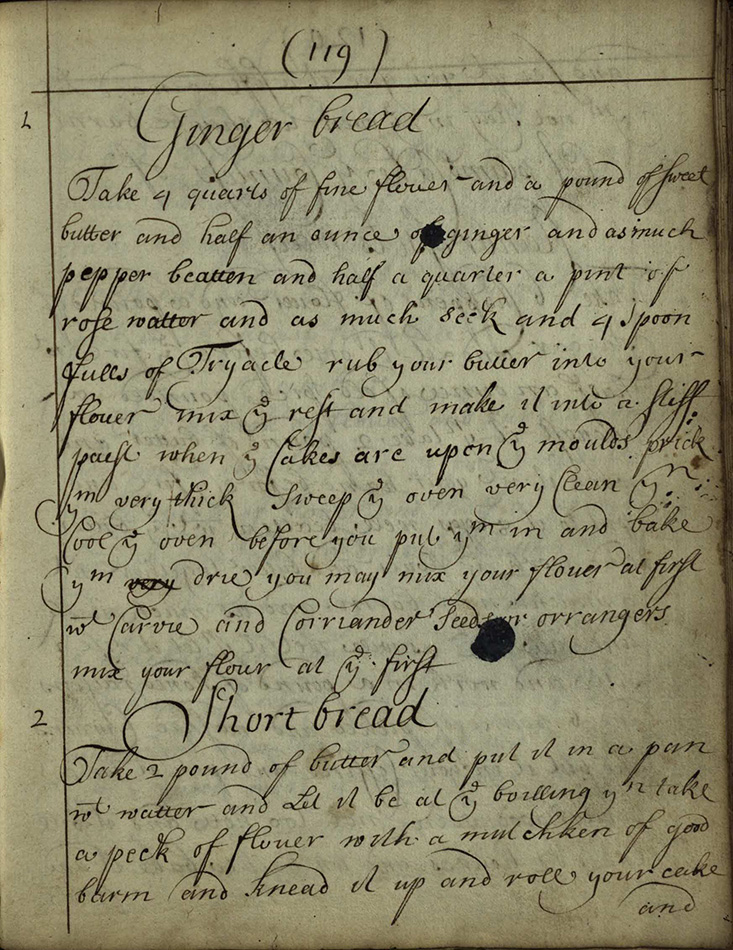
Ginger bread
Take 4 quarts of fine flower and a pound of sweet butter and half an ounce of ginger and as much pepper beatten and half a quarter a pint of rose watter and as much seck [i.e. a dry white wine] and 4 spoon fulls of Tryacle. Rub your butter into your flower, mix ye [the] rest and make it into a stiff paest. When ye cakes are upon ye moulds prick ym [them] very thick. Sweep ye oven very clean & cool ye oven before you put ym in and bake ym drie. You may mix your flower at first wt [with] Carwe [i.e. caraway] and Corriander seeds or orrangers. Mix your flour at ye first.
When asked to comment about their recipes, our cooks had these insights to offer:
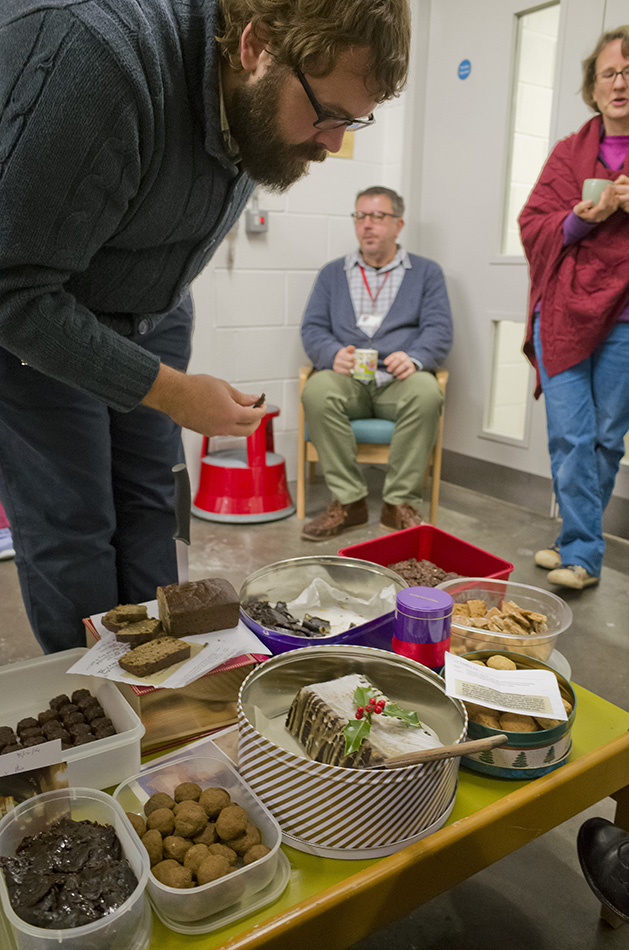
Gingerbread Cake, Another Way, from A Treatise on Confectionary in All its Branches:
“This is sticky… do not let the mix dry on anything.” “Not sure I like this… I think it might need sugar!”
Good plain gingerbread, from Vegetable cookery:
“At a first glance the recipe looks clear with simple ingredients. The unbaked mix results in a very thick and crumbly paste, probably due to the very small amount of butter and the ratio of wet versus dry ingredients.
“Due to the imprecision on time and oven temperature I baked the gingerbread in two batches: the first one at 180° for 20 minutes, resulting in a very hard biscuit; the second one at 180º for 12 minutes. The second batch came out quite good.
“In terms of flavour I really enjoyed the combination of ginger and molasses and I will probably bake them again, increasing the amount of butter and adding some baking powder to make a softer biscuit.”
Transparent Gingerbread, from Vegetable cookery:
“The transparent gingerbread initial mixture was very runny and I ended using a tray where it could be spread thin to bake. While in the oven it was very bubbly which lead me to leave it a lot longer than I initially expected, at 160° for 25 minutes (once again the recipe lacked precision on oven temperature and time). It resulted in a toffee like sweet, which I had not anticipated.”
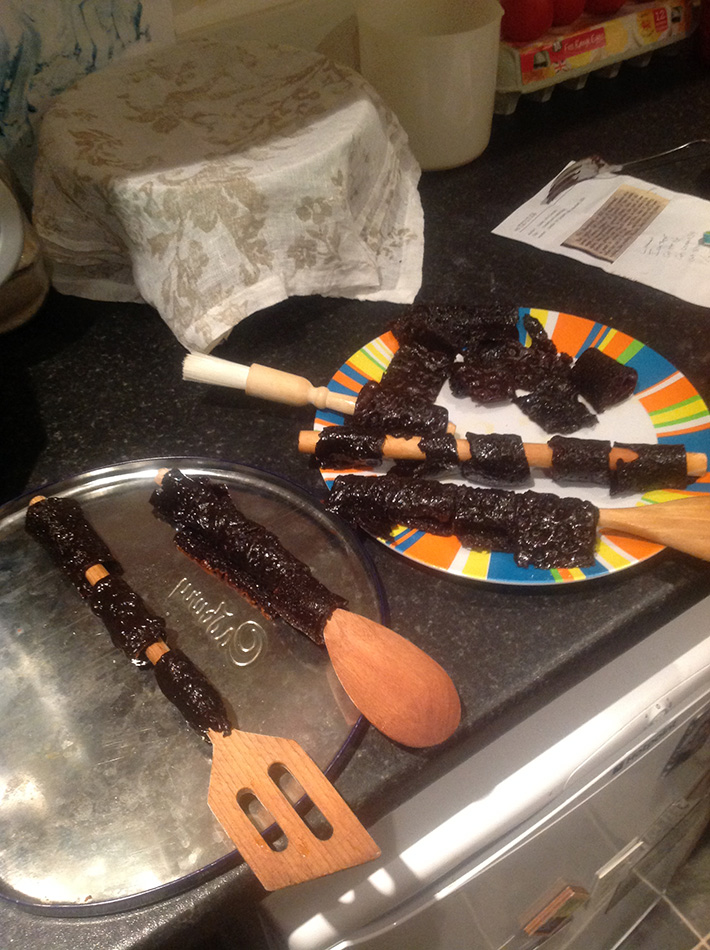
Honeycomb, or Roll Gingerbread, from Cookery and Confectionary:
“With my recipe I made a bit of a mistake and ended up turning what I thought would be ginger ‘snaps’ into ginger gooey-plastic. I usually warm up my butter a bit in order to press or fold it into a dry mix, but my son got me distracted and my softened butter turned into melted butter. Otherwise I followed the recipe to a T. The only vague bits were cooking time and quantity of treacle (in order to turn my dough into a ‘paste’ I used almost ¾ of a tin of dark treacle). When cooking it turned all bubbly and then was very buttery and greasy when cooling off and so made it quite difficult to make tuilles. I had also previously decided to make a bit of icing to go with some of my biscuits (marscapone, icing sugar, marsala, honey, nutmeg, ginger) which came out quite nice. Overall, the taste was lovely, and the texture turned out really interesting: somewhere halfway between a piece of saltwater taffy and a biscuit. They do look pretty horrible though….”
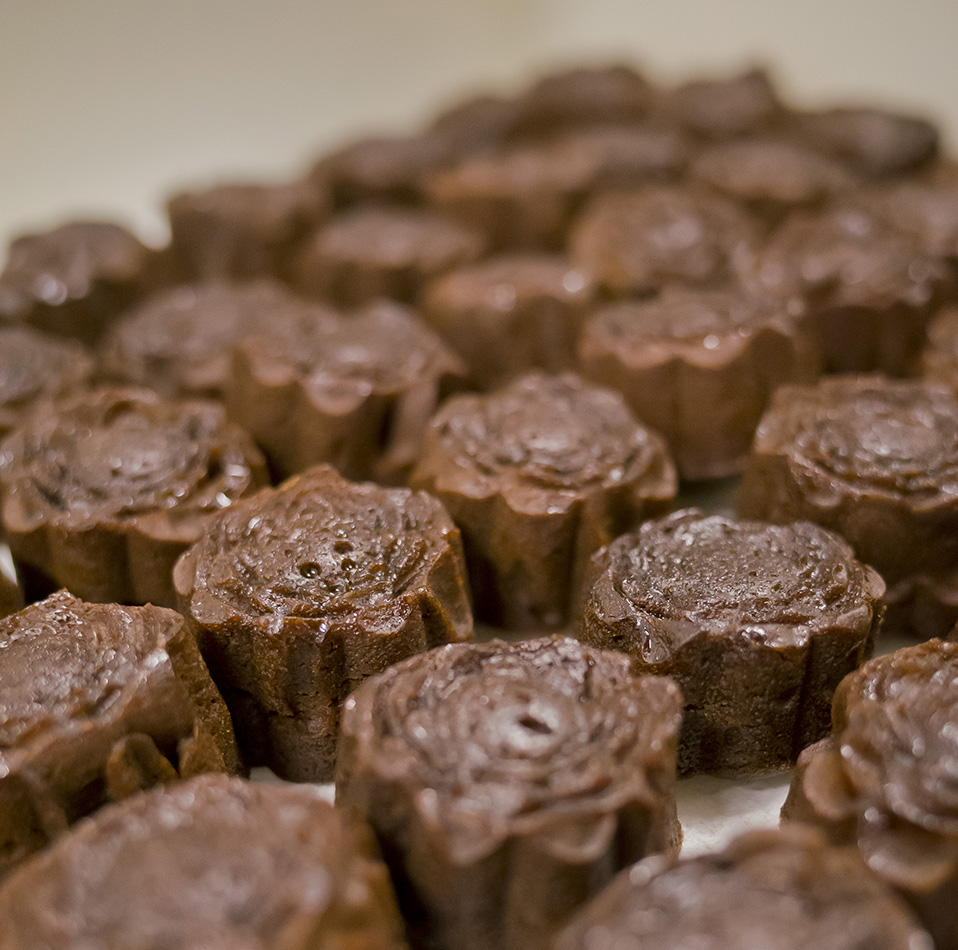
Ginger Bread Nuts, from Miss King’s recipe book, 1837 (msdep137):
“I chose a recipe which included familiar ingredients and ones which I like (ginger and nutmeg). Unfortunately, what looked nice on paper was not so in reality. So, I decided style over substance would be the way to go and put my mixture in rose shaped moulds in the hope of being awarded presentation points.”
Orange Gingerbread, from Vegetable cookery:
“The massive quantities of treacle and ginger tend to overwhelm the orange flavour, but otherwise these are actually quite nice. In our convection oven, these cooked for a very short time at a very low temperature–about 6-7 minutes at 130-140° C. Any longer and they turned into little discs of charcoal. I would definitely consider making these again, but would reduce the quantities of ginger and treacle, increase the amounts of flour and candied peel, and maybe sneak in a little bit of baking powder and a pinch of salt.”
If you fancy having a go at some 18th or 19th century gingerbread recipes yourself, you can find them in the University of St Andrews Gingerbread Cookbook 2014 .
-CM
Thank you, CM. I love gingerbread, and I take this selection of recipes and your comments as a very welcome Christmas present. My molasses (treacle to you) is waiting.
[…] in Special Collections tried out this recipe in our Great Gingerbread Bake-Off. When this recipe was baked, it wasn’t very popular in comparison with others, since it called for […]